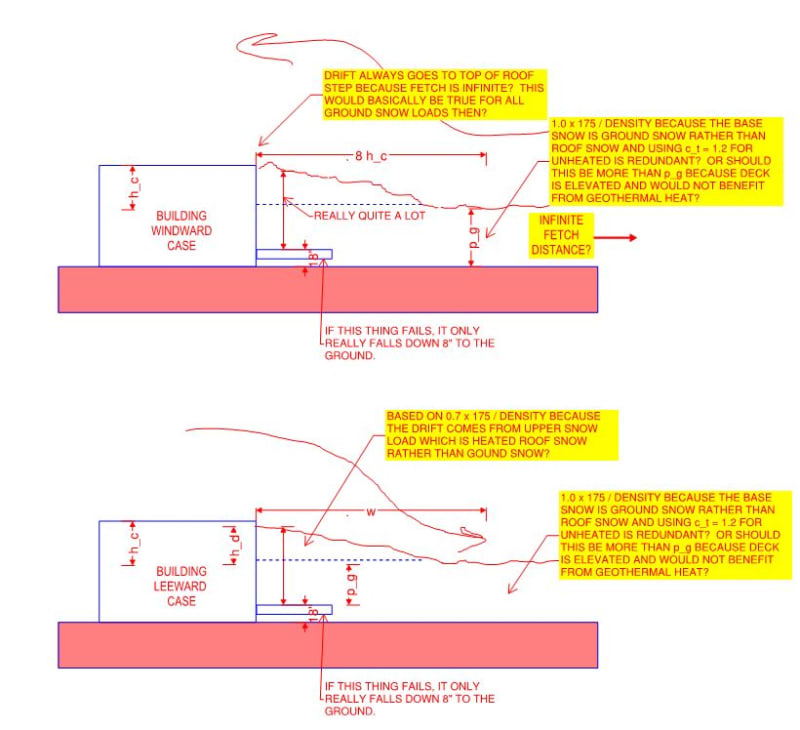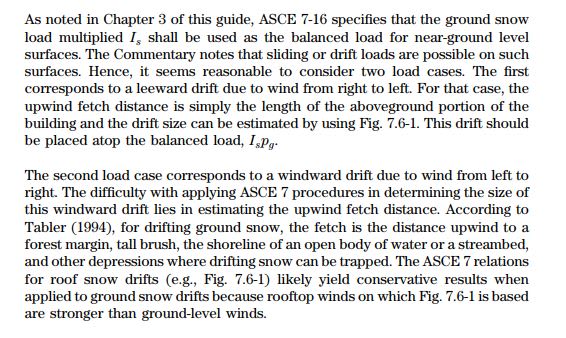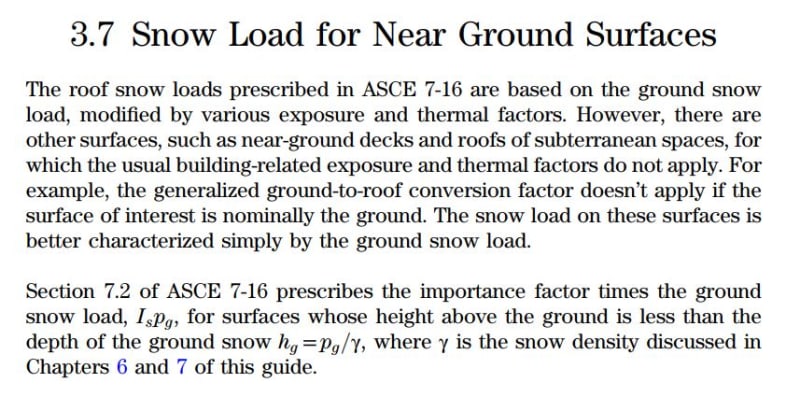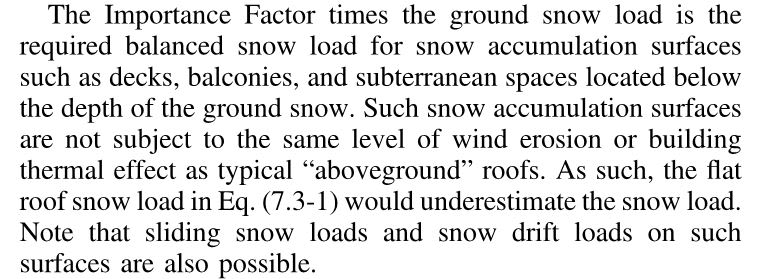Part 9 is full of exceptions for code requirements if your joists are less than 600 mm above grade (distance from grade to the underside of joists). Generally, that exception only applies to decks and platforms less than 55 sq.m in area. That may or may not help you in this instance...
In my general experience:
- Good skiing is not found in high-wind areas. That doesn't stop people from putting ski resorts in such places (almost every Alberta ski hill), but in general, high snowpack areas have calmer winds. They generally occur where storms "pile up" against terrain and dump their precipitation, rather than where the storms are flying through en route to Saskatchewan.
- Below treeline, drifing effects are really minor. Big conifers are really good at killing the wind. At treeline and above, drifts rapidly show up. Near ridgetop, drifting effects are incredible. I am guessing that the ski getaway mansion is built in some fancy-pants development near the base of a ski hill. That should help keep the wind in check, barring giant clear-cut fetch areas.
Your thoughts on lateral loads are not misplaced. Deep snowpacks do exert creep and glide lateral forces. At your magnitude of ground snow load, these will begin to accumulate if you are on a sloped site, and are applicable to things sticking up above your roof. I haven't had a project where these are applicable to the building globally (like pushing the building off its foundation), but it definitely affects things like chimneys on sloped roofs. The Swiss SLF Institute is generally the reference that I use in estimating these. You should be able to find some design guides for snow restraining structures, and that's what I have turned to in the past. More for the architect too, but watch out for the roof-a-lanches and don't put the Porsche parking area under one.







